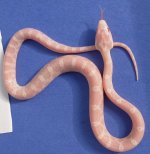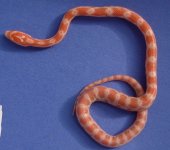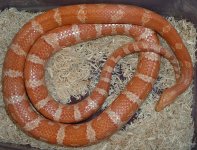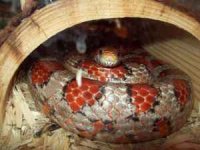Hi,
I got a pair of 3-4 year old adults from a guy on Craigslist that he bought separately from pet stores out west. He has housed them together for 2 years and they had clutches each spring but he failed to incubate them properly and they did not hatch. The female looks like the snow corn on VMSherp but much fainter orange pigment. Perhaps she is a blizzard. The male looks like a hypomel or possibly a lava. I am brumating them now and plan to breed them in the spring. Obviously if they do not have any of each other's recessive alleles the clutch will all be wild-type in appearance. But I assume that many of the snakes that show up in pet stores are the excess offspring from breeders assembling various compound genotypes. What do you think the chances are that these will share some recessive alleles?
Thanks,
Ben
1.0 hypomel or lava
0.1 snow or blizzard
I got a pair of 3-4 year old adults from a guy on Craigslist that he bought separately from pet stores out west. He has housed them together for 2 years and they had clutches each spring but he failed to incubate them properly and they did not hatch. The female looks like the snow corn on VMSherp but much fainter orange pigment. Perhaps she is a blizzard. The male looks like a hypomel or possibly a lava. I am brumating them now and plan to breed them in the spring. Obviously if they do not have any of each other's recessive alleles the clutch will all be wild-type in appearance. But I assume that many of the snakes that show up in pet stores are the excess offspring from breeders assembling various compound genotypes. What do you think the chances are that these will share some recessive alleles?
Thanks,
Ben
1.0 hypomel or lava
0.1 snow or blizzard









